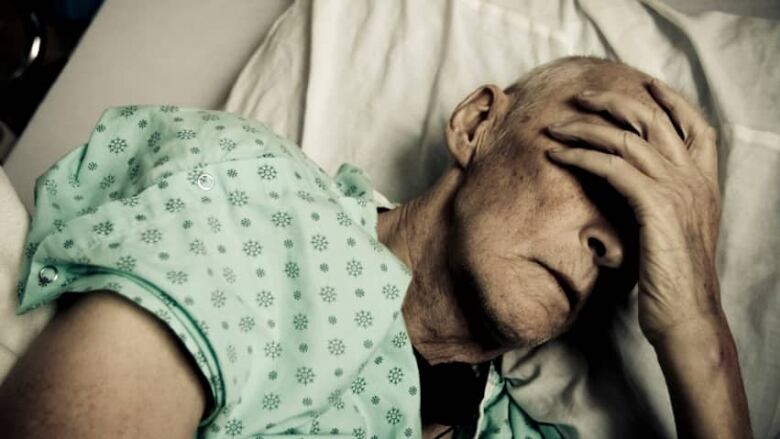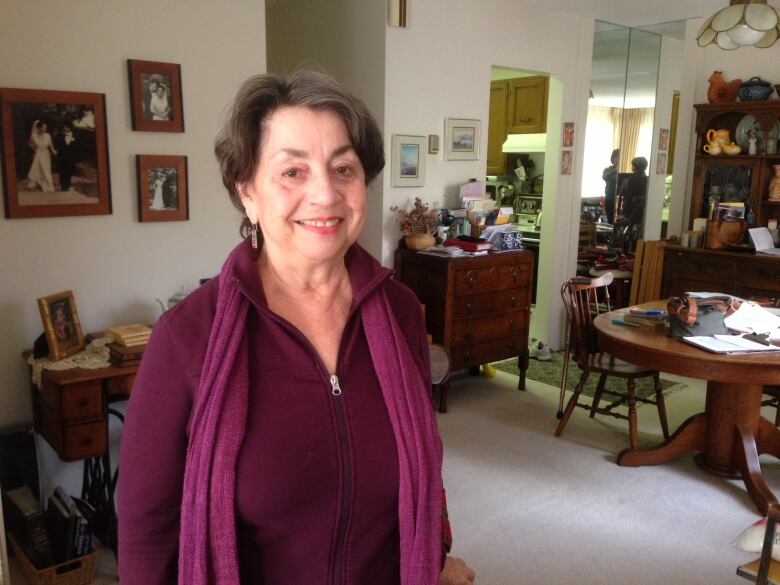1 in 5 Canadians struggles with chronic pain
Doctors say senior women are the demographic group most-affected by chronic pain

If you dont already suffer from chronic pain, there's a high likelihood that some day you willor, at the very least, thatyou'll learn about it through the experience of aclose friend orfamily member.
Dr. Pat Morley-Forster, the medical director of the pain management program at St. Joseph's Health Care in London, Ont., saysthat, overall, about onein five Canadians suffer fromsome kind of chronic pain.
"Whether it be chronic headache, chronic back pain, or pain after a surgical procedure," she explained.
Morley-Forstersays chronic painis loosely defined aspain that lasts longer than three months the usual time needed for injuries or wounds to heal.
It is a problem that can be caused by a combination of physical, psychological, social and occupational factors, and it can bedisabling.And, looking at incidencesof chronic pain occurring in different agegroups, it appears the problemonly concentrateswith time.
"The number goes up with the aging population, so it could go up to onein three oronein four, for a population that's 65 and over," Morley-Forstersaid.
Women more likely to report pain
Chronic pain has beena major problemfor many seniors for years, dramatically impactingtheir quality of life.
According to data gathered byStatistics Canadadata in two surveys in 1996/1997 and2005, roughly27 per cent of seniors living at home and up to38 per cent of those living in health-care institutions have chronic pain, and reporting rates were higher for women than for men.
The 1996/1997 National Population Health Survey found that chronic pain interfered with the activities seniors could perform, with 64 per cent of those experiencing chronic pain while living in institutionsreportingthat it interfered with most of their activities. In households, 54 per cent of those living with chronic painreported thatit interfered with most of the activities they did.

One such sufferer is AdaGlutstein, a71 yearold who haslived with chronic pain for over 10 years.
Everything became very difficult, and I had to start thinking about how I was going to position my body to do different things.-AdaGlutstein, chronic painsufferer
She used to be a teacher in Vancouver, but had to retire early because her condition made everyday tasks extremely difficult.
"I just found I couldn't walk very well," she said. "[I] couldn't put the dishes in the dishwasher, or bend over to take them out."
"Everything became very difficult, and I had to start thinking about how I was going to position my body to do different things," she explained."I [once] was the kind of person who ran up and down stairs, and did everything quickly. I became somebody who walked with a cane."
Morley-Forster says Canadian doctors have difficulty treating patients with chronic pain because of a lack of national standards and because doctors tend to look at chronic pain as a secondary problem.
The situation ischanging though, becausemore and more experts and institutions are beginning to define chronic pain as a disease.
- More in this series:Why did John Silva's chronic pain go undiagnosedfor so long?












_(720p).jpg)


 OFFICIAL HD MUSIC VIDEO.jpg)
.jpg)



























































































